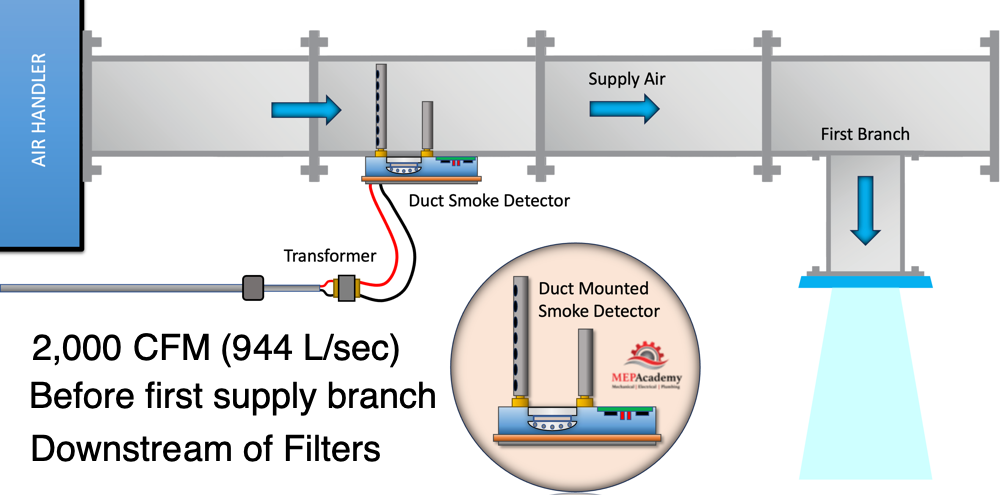Understanding Duct Mounted Smoke Detector Requirements in Commercial Construction
Protecting occupants from fire and smoke hazards is a top priority in building construction, and one crucial aspect of this is the proper installation of duct mounted smoke detectors. In this article, we’ll delve into the requirements for duct-mounted smoke detectors in commercial buildings, offering insights and guidance to ensure compliance with safety regulations, and show how they might be wired to a fire alarm panel.
If you prefer to watch the video of this presentation, then scroll to the borrow or click this link Duct Mounted Smoke Detector
How Duct Smoke Detectors Work
Air is drawn into the detector by a set of tubes extending into the ductwork. The long tube has holes along its length that are open to the direct air stream. The air enters the holes on the tube and is drawn into the detectors sensing chamber, surrounding the sensor.

After entering the sensor, the air is exhausted back into the duct through a shorter exhaust tube. There are various technologies for sensing smoke, but the results are to prevent the spread of fire or smoke by the ventilation system. If a significant amount of smoke is detected a signal is sent to shut down an air handler, fan coil or air conditioner.
NFPA 90A Compliance
The National Fire Protection Association (NFPA) Standard 90A outlines the requirements for air conditioning and ventilation systems, including the installation of duct-mounted smoke detectors. It’s essential to adhere to these guidelines to ensure proper placement and functionality. This is required on air handlers and fan coils having a capacity of 2,000 CFM or 944 L/sec.

Placement and Spacing
Duct-mounted smoke detectors should be strategically located in accordance with NFPA 90A. Duct mounted smoke detectors are usually required to be installed downstream of the air filters and before any supply air branch ducts. This ensures that the smoke detector senses smoke before it enters any of the spaces connected to the supply.
Return system smoke detectors are not required when the entire space served by the air distribution system is protected by a system of area smoke detectors.
Duct mounted smoke detectors are not a substitute for providing area smoke detection and early warning detection, nor is it a replacement for a building’s regular fire detection system.
Why use Duct-Mounted Smoke Detectors?
The primary function of these smoke detectors is to initiate the shutdown of the air handler fan within the specific unit it serves in case of the presence of smoke originating from components such as the motor, filter, belts, and similar elements within that unit. If the motor overheats it could cause a fire within the unit and blow smoke into the spaces before the return air senses the smoke. This is why the smoke detector is located downstream of the filter.
Testing and Maintenance
Regular testing and maintenance of duct-mounted smoke detectors are critical. Ensure that they undergo functional testing as recommended by the manufacturer and adhere to scheduled inspection routines to maintain their reliability.
In summary smoke detectors provide early warning of a problem within the ventilation system and are not used for area detection. Remember to check your local code for the conditions surrounding the proper use and placement of smoke detectors, as each code varies.







